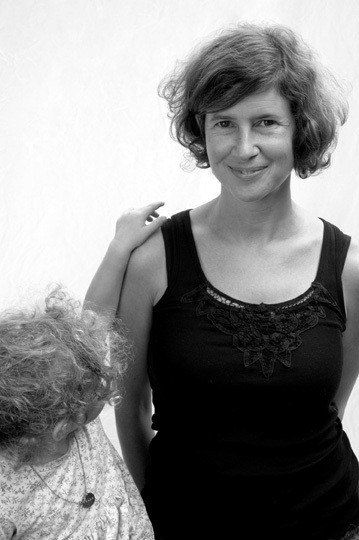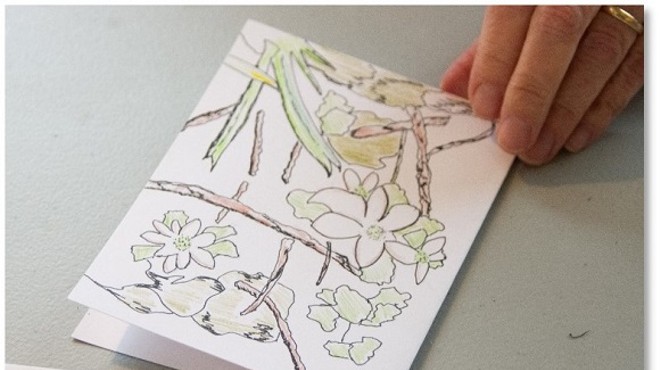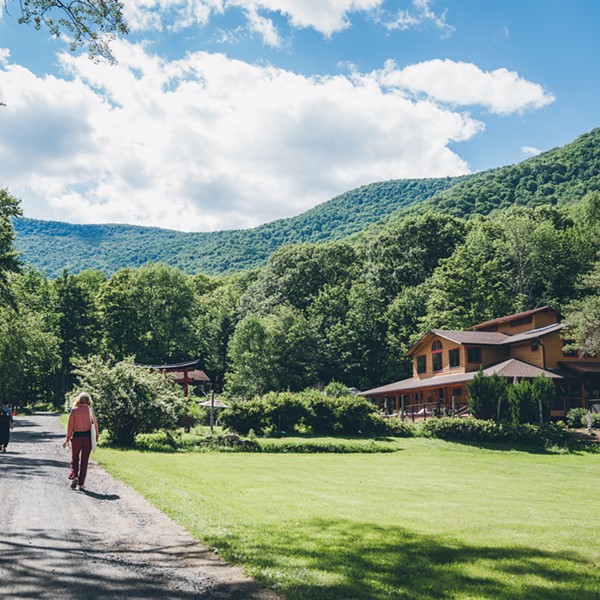Yet, though it is like this, simply, flowers fall amid our longing,
and weeds spring up amid our antipathy.
— Dogen Zenji, Genjokoan
The other night I had a terrible dream: I was driving down South Plank Road, the road that leads to Zen Mountain Monastery. My dear friend Lisa (who I met at the monastery over 10 years ago) was sitting in the passenger seat talking about practice. I looked in the back seat and Michelle was there, a friend who likes to walk to the monastery, but who we often pick up on Sundays as we drive in for service. And next to Michelle was my daughter Azalea’s car seat. Empty.
Then memory crashed in: Azalea and I had last been in a public bathroom and I was helping her pull up her pants. Somehow I had gotten in the car without her. She was gone. I had left her there. Terror and nausea ripped into me, as I tried to turn the car around in the narrow road, demanding of it what felt like a 250-point turn. I could not believe the insanity of having to maneuver this giant machine around in order to find my daughter. It felt impossible. Head to toe, I heaved in agony, imagining my baby alone, wailing, afraid, abandoned, forsaken. How long had it been? Had she wandered into a hallway by herself? Had someone taken her? Hurt her? Would I ever see her again? Was she…still alive? The despair was so total, and so primitive that it was incoherent. I woke up sobbing. I was relieved of course, to realize it was a dream, and to hear Azzie through the monitor as she rolled over, but I was punctured nonetheless.
From the Buddhist perspective, what we call reality is not so different from a dream. In the Diamond Sutra, one of the earliest recorded books in the world as well as a central Buddhist teaching on impermanence, the Buddha ends with this verse:
Thus shall you think of this fleeting world:
A star at dawn, a bubble in a stream,
A flash of lightning in a summer cloud,
A flickering lamp, a phantom, and a dream.
Many people I know have come to Zen practice having been rocked by mortality, realizing with a shock, even for a moment, the truth of impermanence. I entered the gate of Zen with almost the opposite problem: How can I breathe life into my perpetual heartache and looping mind? And then, several years into my practice, I brushed up against death for real when my father died and, at the same time, I was dealing with a life-threatening situation of my own. Even so, my defenses were so strong I was able to float back up into a web of deluded certainty, mistaking the dream for a stable reality.
And then Azalea was born.
It would be nice if I could say that since that day, three-and-a-half years ago, I have awakened to the truth of the “fleeting world,” that somehow the most profound experience I am likely to encounter—giving birth to a human being (God did I really do that?!)—gave me some lasting insight into the cycle of birth and death. I wish I could report that I have since been more consistently heeding the implicit advice of the Buddha’s poem: Let go.
In some ways, as I have chronicled in this column over the months, learning to parent has been, for me, learning to live in accord with impermanence, coming to terms with the twists and turns, the bumps and the bruises, the “flash of lightning in a summer cloud.” But when I imagine the possibility of losing Azalea’s life, that anxiety seems to override all the subtle awareness of emptiness I can muster. I know that people, moms in particular, survive losing their children, but I honestly don’t know how, and that terrifies me. It seems impossible—wrong!—to imagine that I could treat my bond to Azalea as just another “bubble in a stream.” That’s really taking things a bit far. In fact, my initial interpretation of that dream was that perhaps my dharma life is a distraction for me, and if I throw myself in with too much abandon, look at what could happen.
And yet there is the story of Gotami, a woman who approached the Buddha holding her dead child in her arms, seeking help with her unbridled grief. The Buddha said he could help, but that she needed to find a home that had never experienced death. In searching for the place where life was not fleeting, she awoke to the true nature of things, and to her own Buddha-nature.
As I look at my own dream, I see it more and more as an invitation to practice. Instead of viewing my “attachment” to Azalea as an impediment, or as something to protect, I feel like the dream was a hint about what I am capable of—an open-heartedness that motherhood has allowed me to taste for the first time in my life. Buddhism is a tradition that has primarily been practiced by single men and childless women. As in most religions, while women have been kept on the periphery, their magical powers are often front and center. In Zen we hear the relationship between a mother and child used as a metaphor for nonduality, or the “womb of suchness” as the fundamental seeds of enlightenment inherent in all of us, and a “grandmotherly heart” is held up as the kind of compassion a teacher should have for a student.
In my so-called dream, I thought I was going the right way—toward practice—when I realized something was missing, and it was something big, something vital, something I cannot live without. I don’t think it’s Azalea. And I don’t think it’s not Azalea. And I don’t think I need to turn the car around at all.















